Abstract
The procaryotic endogenous storage polymer known as poly-beta-hydroxybutyrate is actually a mixed polymer of short-chain beta-hydroxy fatty acids. A method for the quantitative recovery of this mixed polymer, called poly-beta-hydroxyalkanoate (PHA), with analysis by capillary gas-liquid chromatography, showed the presence of at least 11 short-chain beta-hydroxy acids in polymers extracted from marine sediments. Polymers extracted from Bacillus megaterium monocultures were also a complex mixture of beta-hydroxy acids with chain lengths between four and eight carbons. Lyophilized sediments were extracted in a modified Soxhlet extractor, and the polymer was purified with ethanol and diethyl ether washes. The purified polymer was treated with ethanol-chloroform-hydrochloric acid (8.5:2.5:1) for 4 h at 100°C, a treatment which resulted in the formation of the ethyl esters of the constituent beta-hydroxy acids. Subsequent assay of the products by gas-liquid chromatography indicated excellent reproducibility and sensitivity (detection limit, 100 fmol). Disturbing sediments mechanically or adding natural chelators increased all major PHA components relative to the bacterial biomass. Gardening of sedimentary microbes by Clymenella sp., an annelid worm, induced decreases in PHA, with changes in the relative proportion of component beta-hydroxy acids. The concentration of PHA relative to the bacterial biomass can reflect the recent metabolic status of the microbiota.
Full text
PDF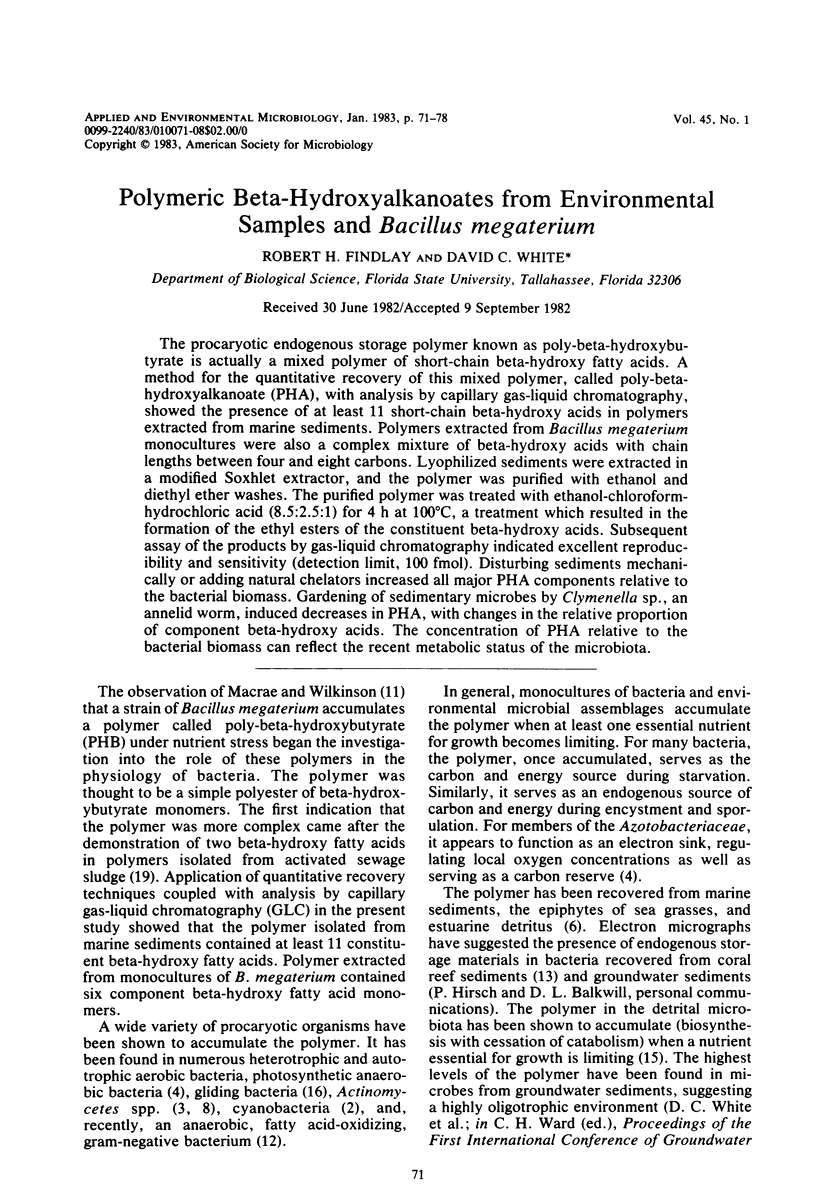
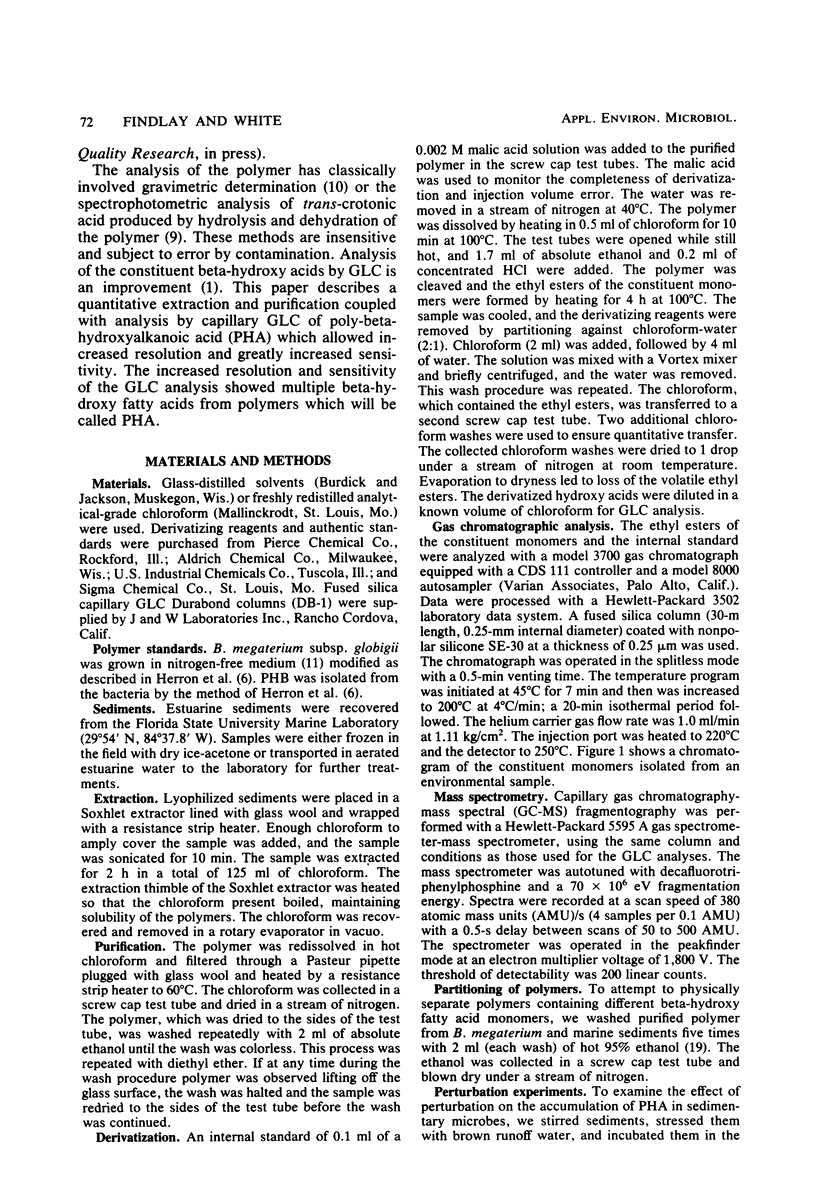
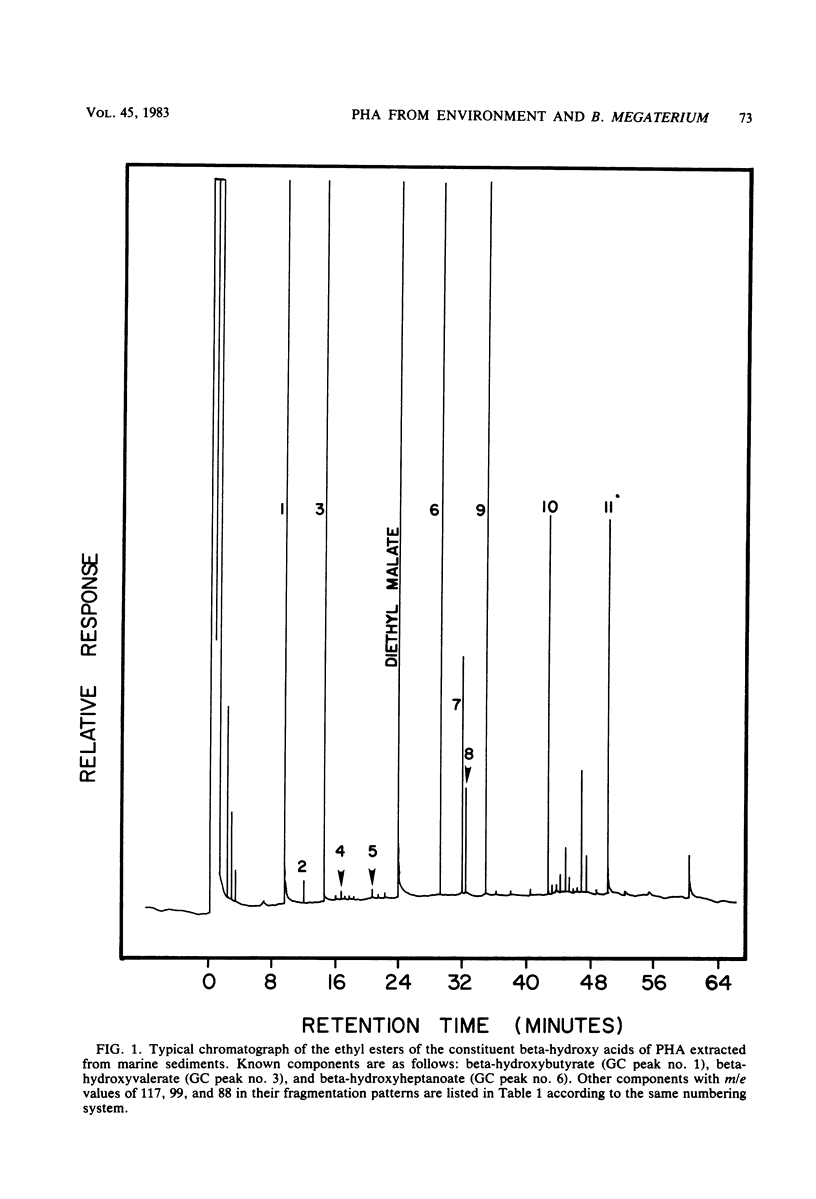
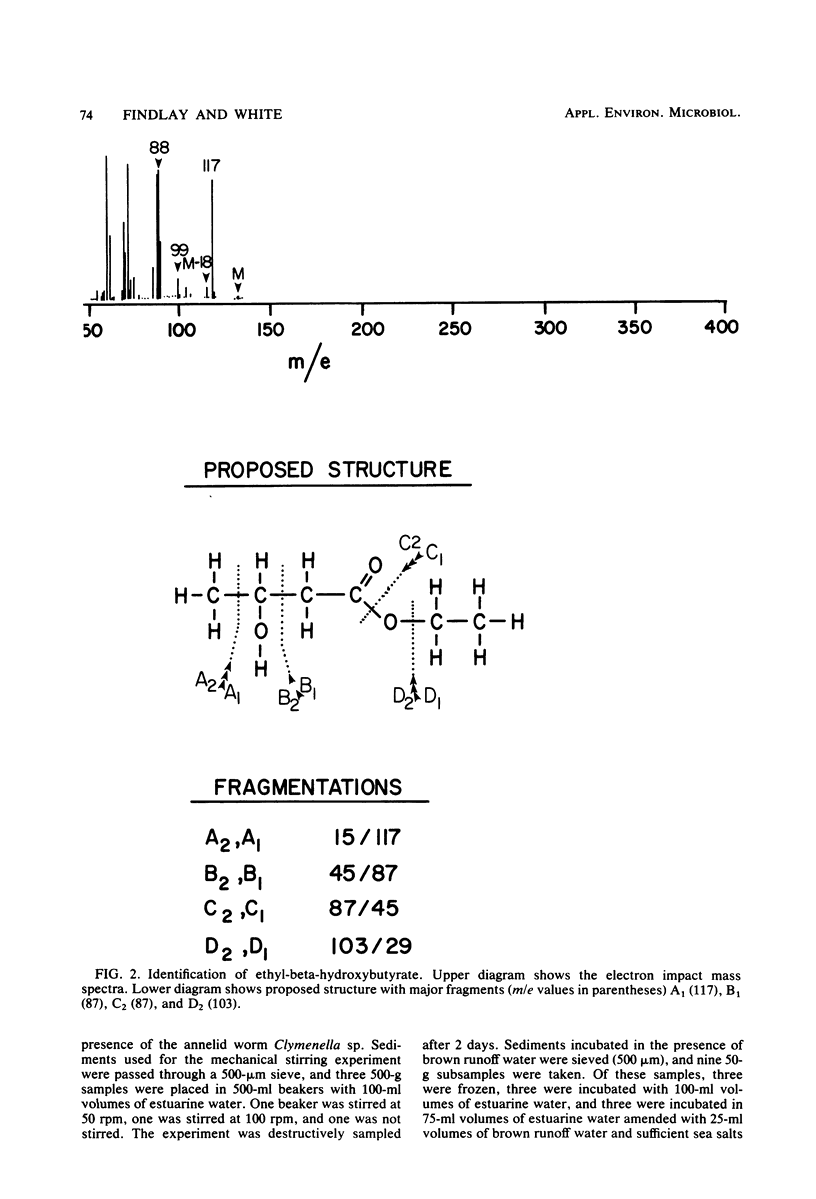
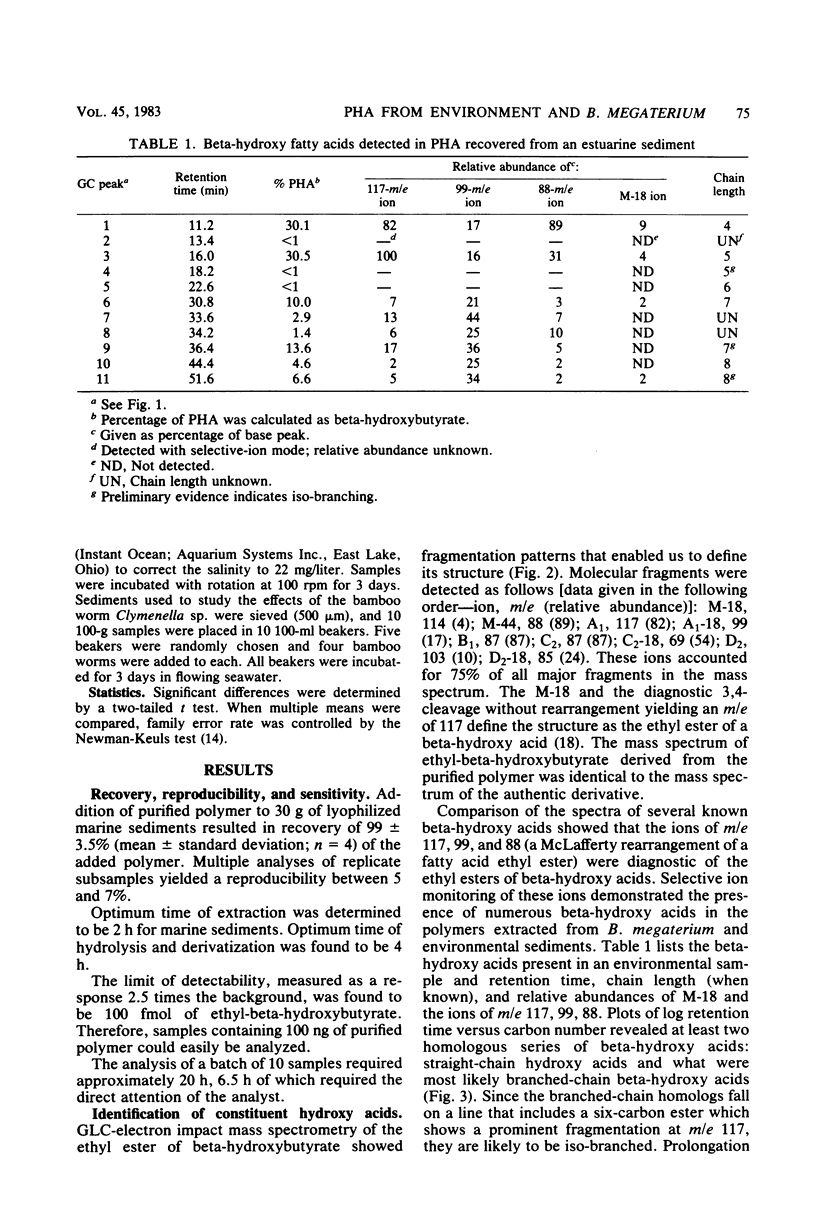
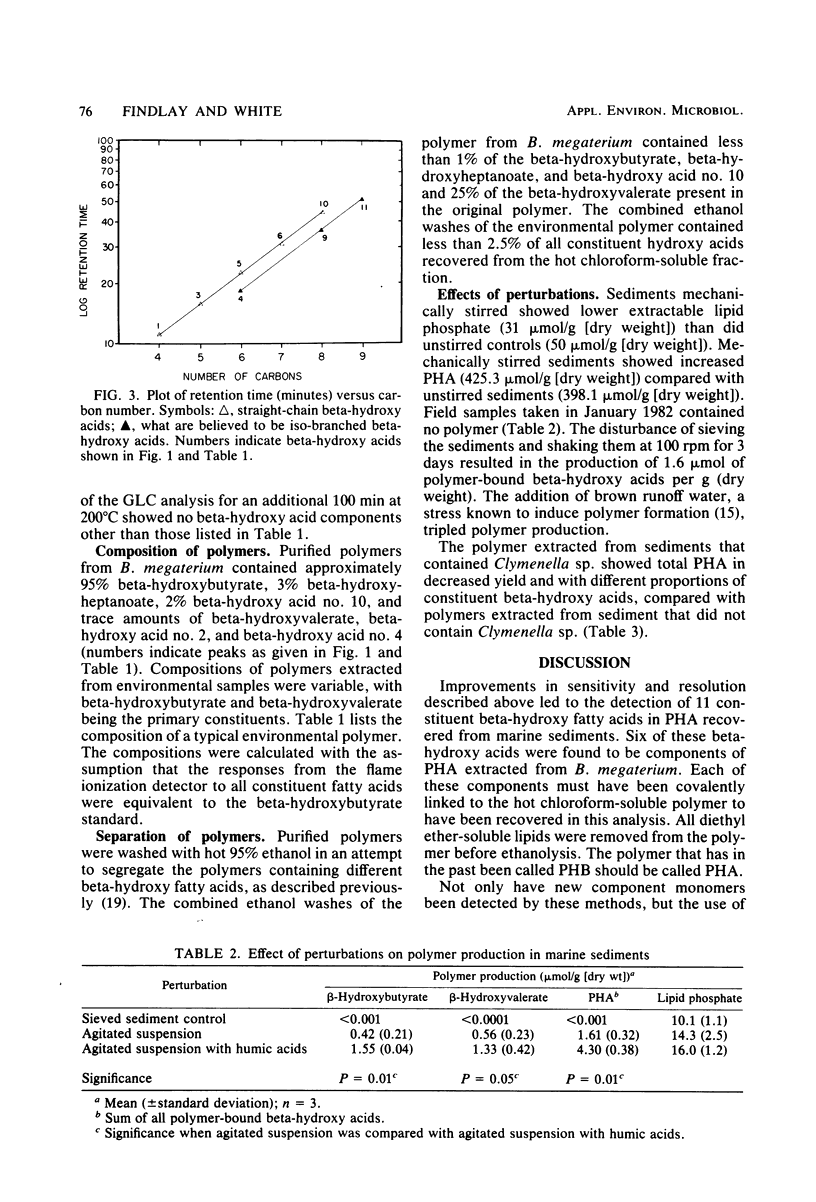
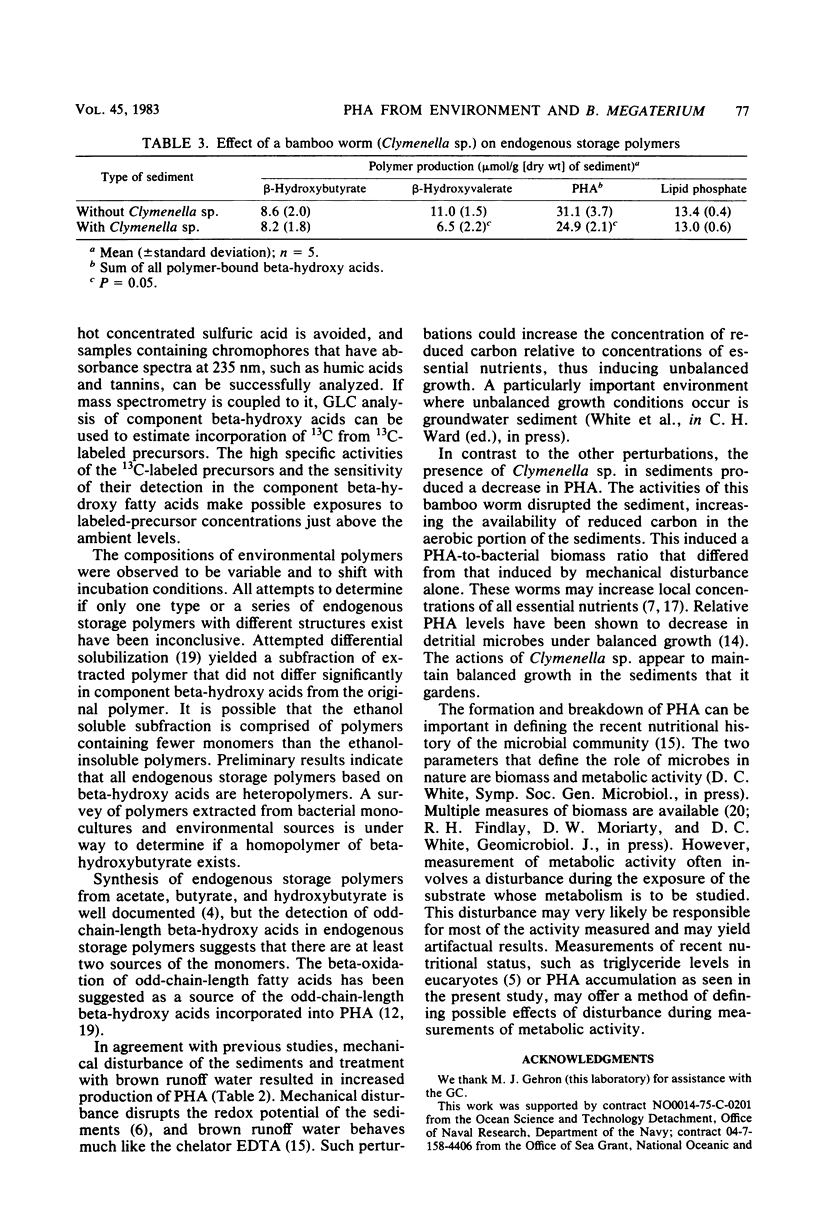
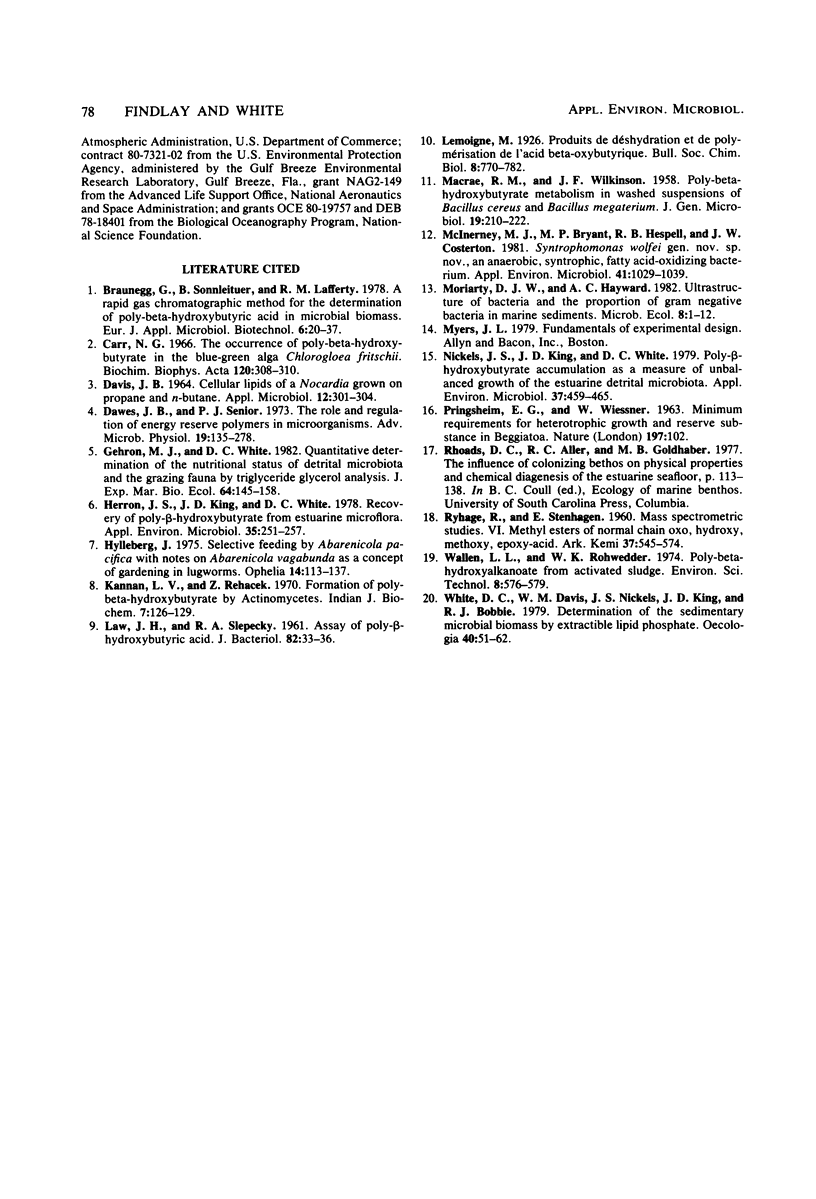
Selected References
These references are in PubMed. This may not be the complete list of references from this article.
- Carr N. G. The occurrence of poly-beta-hydroxybutyrate in the blue-green alga, Chlorogloea fritschii. Biochim Biophys Acta. 1966 Jun 8;120(2):308–310. doi: 10.1016/0926-6585(66)90353-0. [DOI] [PubMed] [Google Scholar]
- DAVIS J. B. CELLULAR LIPIDS OF A NOCARDIA GROWN ON PROPANE AND N-BUTANE. Appl Microbiol. 1964 Jul;12:301–304. doi: 10.1128/am.12.4.301-304.1964. [DOI] [PMC free article] [PubMed] [Google Scholar]
- Dawes E. A., Senior P. J. The role and regulation of energy reserve polymers in micro-organisms. Adv Microb Physiol. 1973;10:135–266. doi: 10.1016/s0065-2911(08)60088-0. [DOI] [PubMed] [Google Scholar]
- Herron J. S., King J. D., White D. C. Recovery of Poly-beta-Hydroxybutyrate from Estuarine Microflora. Appl Environ Microbiol. 1978 Feb;35(2):251–257. doi: 10.1128/aem.35.2.251-257.1978. [DOI] [PMC free article] [PubMed] [Google Scholar]
- Kannan L. V., Rehacek Z. Formation of poly-beta-hydroxybutyrate by Actinomycetes. Indian J Biochem. 1970 Jun;7(2):126–129. [PubMed] [Google Scholar]
- LAW J. H., SLEPECKY R. A. Assay of poly-beta-hydroxybutyric acid. J Bacteriol. 1961 Jul;82:33–36. doi: 10.1128/jb.82.1.33-36.1961. [DOI] [PMC free article] [PubMed] [Google Scholar]
- MACRAE R. M., WILKINSON J. F. Poly-beta-hyroxybutyrate metabolism in washed suspensions of Bacillus cereus and Bacillus megaterium. J Gen Microbiol. 1958 Aug;19(1):210–222. doi: 10.1099/00221287-19-1-210. [DOI] [PubMed] [Google Scholar]
- McInerney M. J., Bryant M. P., Hespell R. B., Costerton J. W. Syntrophomonas wolfei gen. nov. sp. nov., an Anaerobic, Syntrophic, Fatty Acid-Oxidizing Bacterium. Appl Environ Microbiol. 1981 Apr;41(4):1029–1039. doi: 10.1128/aem.41.4.1029-1039.1981. [DOI] [PMC free article] [PubMed] [Google Scholar]
- Nickels J. S., King J. D., White D. C. Poly-beta-Hydroxybutyrate Accumulation as a Measure of Unbalanced Growth of the Estuarine Detrital Microbiota. Appl Environ Microbiol. 1979 Mar;37(3):459–465. doi: 10.1128/aem.37.3.459-465.1979. [DOI] [PMC free article] [PubMed] [Google Scholar]
- SMITH-WHITE S., PEACOCK W. J., TURNER B., DEN DULK G. M. A ring chromosome in man. Nature. 1963 Jan 5;197:102–103. doi: 10.1038/197102b0. [DOI] [PubMed] [Google Scholar]


